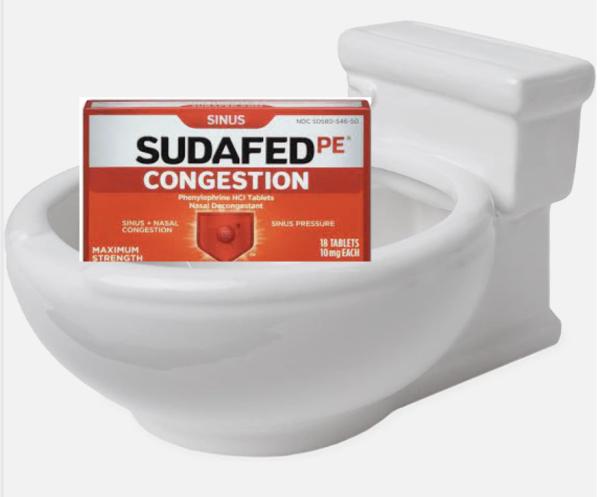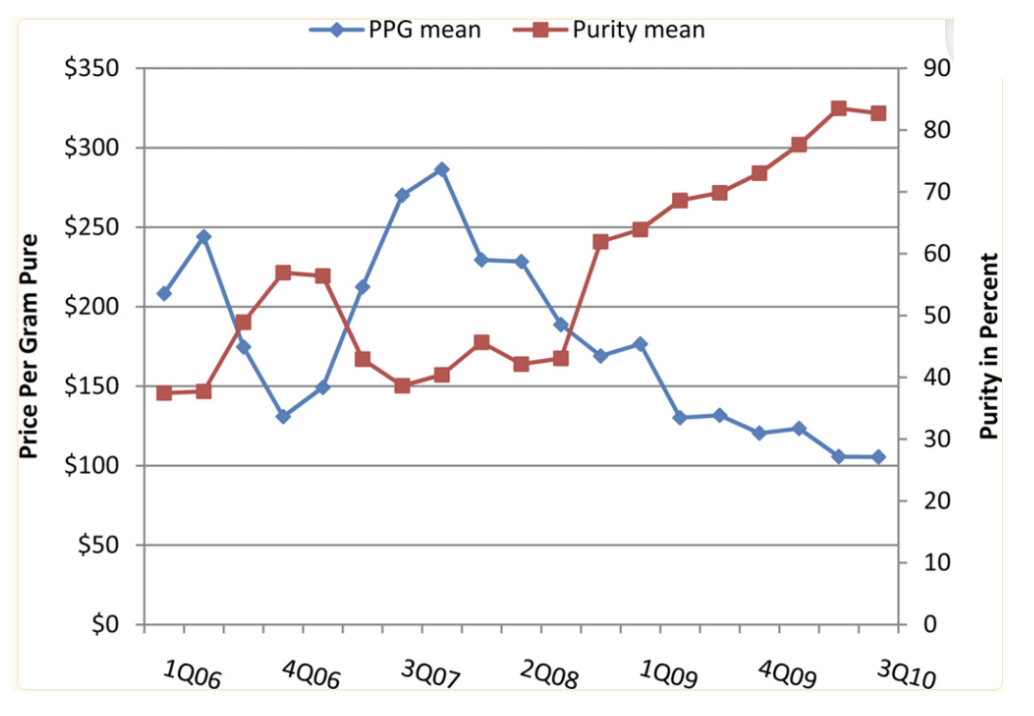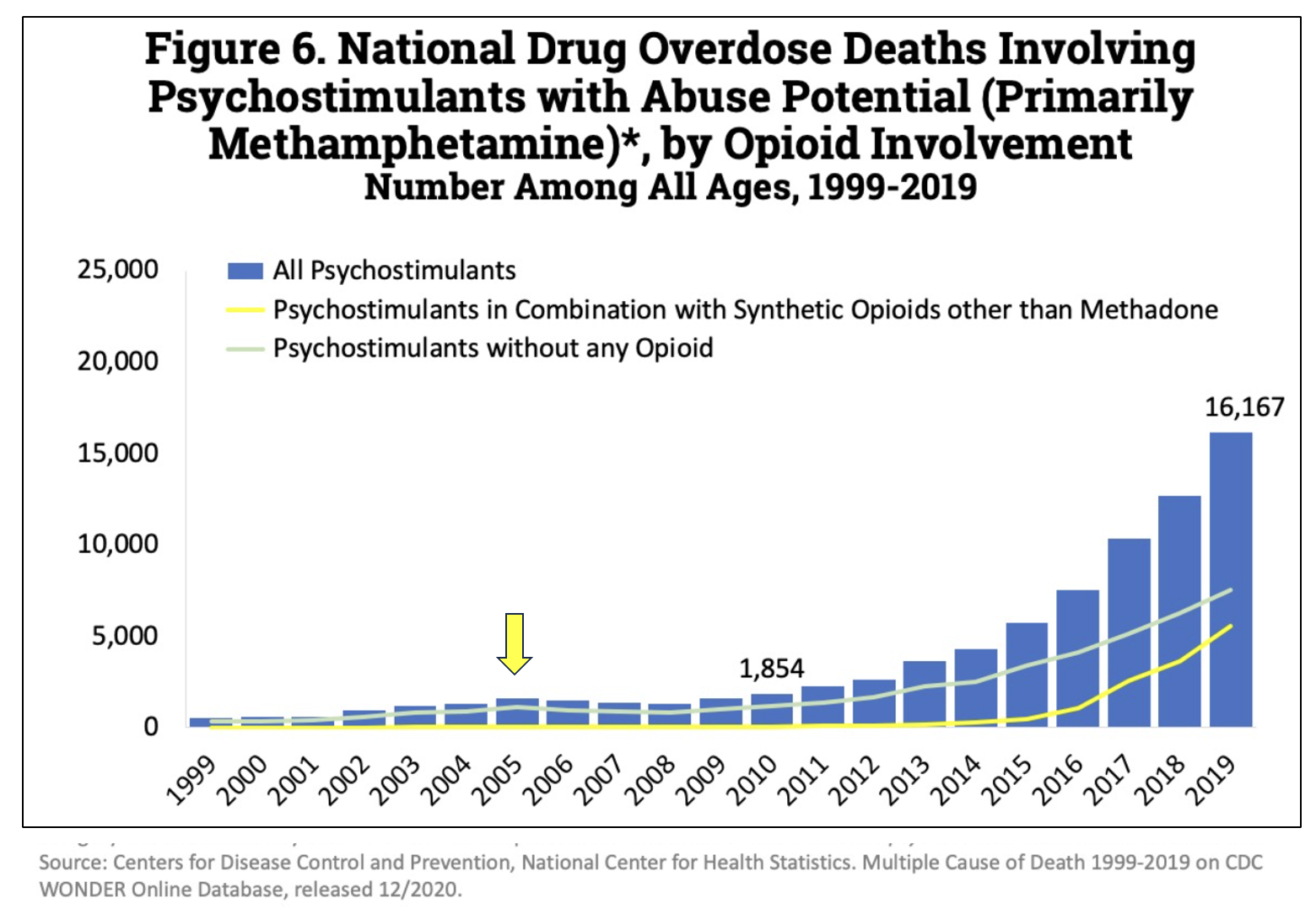
Today, an FDA panel voted unanimously that phenylephrine (PE), the drug that replaced pseudoephedrine (Sudafed) as an over-the-counter decongestant, is ineffective, something I wrote about in 2019. The FDA will probably order that PE-containing products be removed from pharmacy shelves. This should not come as a surprise to anyone with a stuffy nose who tried the stuff. Here's a scientifically rigorous Excel sheet I put together at that time that describes the drug's pharmacological profile:

How did we get here?
In yet another bungled attempt to control illegal drugs, the DEA put forward the Combat Methamphetamine Epidemic Act of 2005, which took Sudafed – a possible synthetic precursor of methamphetamine – off the shelves and put it behind the counter, where ID is required, and there is a monthly limit of 3.6 grams (6 boxes containing 48 pills each). How did that work out?
Not so well.

Figure 1. Purity and price of methamphetamine following the Combat Methamphetamine Epidemic Act of 2005. The average purity of methamphetamine (red line) rose from 40% to 80%, and the price per gram (blue line) dropped by more than half. Source: Addict. Behav. 2011 Dec; 36(12): 1168–1173.
What happened?
Organic chemists have powers that others cannot fully appreciate. We can turn stuff into different stuff. When Sudafed became more difficult to get meth makers switched to an alternative synthesis – the P2P method (1). This method provides a better yield of purer meth (See Why Sudafed Is Behind The Counter: A Meth Chemistry Lesson). Consequently, the price per gram fell off the cliff. The result of the DEA's plan was about what you'd expect (Figure 2).

Figure 2. Between 2005, when Sudafed was pulled from pharmacy shelves, and 2019 the number of deaths from meth went through the roof. Nice job.
Stupid policy and stuffy noses
Drug companies responded to the change in Sudafed's status by substituting another drug, phenylephrine (PE), which cannot be converted to meth, on pharmacy shelves and calling it Sudafed PE – a blatant lie; there is no pseudoephedrine in the pill. How well did the new pill work? The results were mixed:
- It doesn't work.
- See #1
OK, maybe not mixed.
For nearly two decades, Americans who did not want to go to the pharmacist and show ID (and you can bet your last cent that you'll end up in a DEA database) were using a decongestant that not only didn't "decongest" but also came with a host non-trivial side effects.
Bottom line
In yet another botched attempt to control drugs, the DEA's misguided policies resulted in:
- An increase, not a decrease in the amount of methamphetamine on the streets.
- Purer methamphetamine
- Much less expensive, thus more available, methamphetamine.
- Overdose deaths from meth exploded.
- Americans were taking a decongestant with no benefit and some risk. Such a drug would never be approved. Never.
As Dr. Jeff Singer and I have been howling about for years, the "iron law of prohibition" is alive and well. It's too bad that our government refuses to acknowledge it.
NOTE:
(1) P2P stands for phenyl-2-propanone, aka phenyl acetone. P2P reacts with methylamine to form racemic methamphetamine very cleanly.



